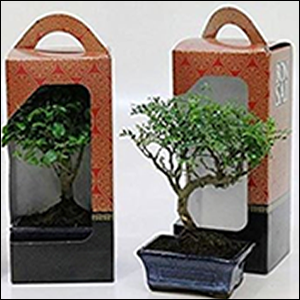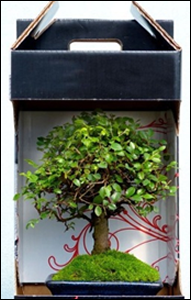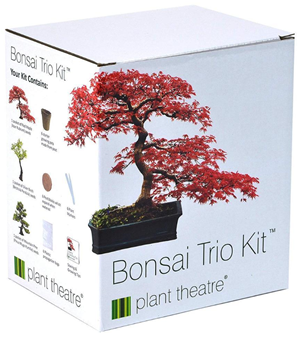Small bonsai packaged for Christmas; they have been brought in from other climates, (often sub-tropical), unused to our climatic conditions, sealed in little highly decorative boxes and frequently not opened for watering.



Packets of seeds or kits that state “Bonsai Seeds”; there are no such thing as bonsai seeds, only tree seeds, the product of which can be trained to become bonsai. Unless you are very young the chances of you producing a good bonsai from seed are as unlikely as growing Sherwood Forest from an acorn - it takes many, many years.


SOME CONSIDERATIONS
- Avoid any bonsai/tree that looks unhealthy, however cheaply it is offered to you. Sick trees rarely, if ever, recover.
- A point to think on - small bonsai do not become big bonsai. You are in control; you grow them under training conditions until they reach the desired size and trunk thickness and then are trimmed and trained to retain that size. The ultimate challenge for the bonsai creator is to keep the essence of the tree. The art of bonsai is telling a story through living illusion. The artist tries to find ways for personal expression within the confines of good horticultural practice. Bonsai is a pleasant mix of form, thought, and suggestion in a miniature world; and like all good art, it endures.
- With the right care, bonsai trees can live as long as normal sized adult trees, if not longer. You are giving them far more attention and care than that received by any tree in the wild.
- Look out for twisted, crossing or uneven visible roots. These are unsightly and may prove hard to rectify.
- Poor grafts. Many bonsai are grafted onto root stock of a similar variety. Scars from grafts not well created are permanent – if it is an ugly one, it is likely to get worse over time as the trunk thickens.
- Yellowing or mottled foliage should be avoided as this could indicate a number of health problems. Sick trees are difficult to deal with and you cannot guarantee their full recovery. Look for evidence of pests and diseases; you do not want to start with inbuilt problems.
- A tree that isn’t secure in its pot. This could indicate that the roots aren’t filling the pot completely for some reason; for example, because they are not growing well, or have become waterlogged and are rotting. Test trees by gently trying to rock the trunk.
- Many branches growing from the same point on the trunk; this could cause swelling of the trunk and be an ugly feature difficult to correct.
Web design: nysys